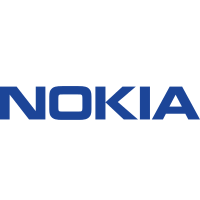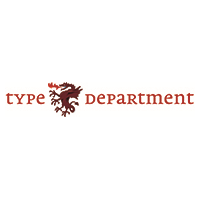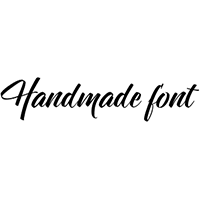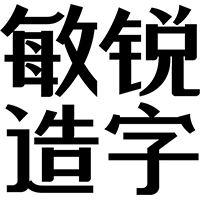Ampersand Conference 2011 Focuses on Web Typography

A little over a week ago I had a true rock'n'roll episode due to a scheduling conflict. A while ago our bass player Gabor Vörös asked if Rosa Luxe* could play a gig on June 16th at Bij' De Vieze Gasten, a wonderful venue in our home town Gent. Incidentally this concert coincided with his birthday, so he was very keen on doing it. To my regret I had to tell him this was impossible. I had already committed to report Ampersand, the "one-day event for knowledgeable web designers & type enthusiasts" happening in Brighton, UK the very next day. Yet Gabor doesn't easily take no for an answer. His enthusiasm and unstoppable drive are part of his charm, and one of the reasons why his own freaky-funky-jazzy prog-rock outfit Humble Grumble is so successful. His offer was this – one or more of my band mates in Rosa Luxe* would accompany me on the trip to either relieve me at the wheel or keep me awake, and we would drive all night to get to Brighton in time. To make matters even more interesting I found out later that our gig the day after the conference, June 18th was a fairly early afternoon concert.
And so it happened that after playing the last encore at the Bij' De Vieze Gasten, I hastily broke down my drum kit and dropped it off at our vocalist Megan Quill's place; drove off around eleven; arrived at the Eurotunnel terminal in Calais, France with minutes to spare to check in for the 01:22 night train to Folkestone, UK; drove all the way to Brighton; slept barely three hours; had breakfast with the lovely David John Earls (ex-typographer.org) and Ministry of Type's Aegir Hallmundur whom I spent most of my time in Brighton with; registered for the conference at the Brighton Dome Corn Exchange; tweeted frenetically all day; had dinner and dropped by at the Above Audio After-Party; slept about six hours; drove back to Belgium, again through the Eurotunnel; arrived back at Megan's place around one, just in time to load in my drums and leave with the rest of the band for Terneuzen, the Netherlands to play our gig at the Zeeuwse Gronden celebrations. Insane? Hmmm, comes pretty close.
Rosa Luxe* at Bij' De Vieze Gasten, just prior to leaving for Brighton, UK.
Photos by Michel Eloot
But enough musicians-on-the-road hi-jinks, back to Ampersand. Richard Rutter and the people at Clearleft organised a very professional full-day event with notable speakers. The speakers' list was indeed quite impressive, as most of the big players were present, both type designers/technicians and web type service providers. Talks spanned the whole gamut from the conceptual to the technical nitty-gritty. And yes, there were a hell of a lot of iDevices being used in the sold-out venue.
One could think there were only iDevices at Ampersand conference, yet…
Photo by Olivier Ahn
… here's me tweeting like a maniac – a mere twelve hours after the gig – on a MacBook Pro laptop, not an iPad or iPhone. Bite me, hip youngsters! : P
Ampersand audience by Nick Sherman
Coffee and refreshments at the Ampersand conference 2011.
Photo by Sean Johnson
As with any conference the "parallel track" in the lobby was almost as important as the official program of presentations. For most of the web designers who made up the majority of the attendance this was a unique opportunity to mingle with type designers, as well as representatives of foundries, vendors, and web type services. Personally I had the pleasure to see David & Aegir, Jonathan Hoefler, David Berlow, and a couple of other familiar faces after far too long, and meet some great new people like Jon Tan, Jason Santa Maria, Mark Boulton, and so on. I also had a very nice chat with John L. Walters, who – besides editing the essential design magazine Eye – also reviews and writes about music for The Guardian, and who gave me some welcome tips on new artists to follow.
"The EU was going to sue us over that." Vincent Connare on why the Euro sign with eye ball was eventually removed from Comic Sans.
Photo by Sean Johnson
Vincent Connare|Keynote: From the Dark Side… Speak to Me
After the opening address by Richard Rutter, the first speaker to take the stage was Vincent Connare, who introduced himself as a type technician, not a type designer, providing typographic software solutions. He started with an interesting history of digital type, discussing the various legacy formats from an engineering viewpoint. The audience was treated to a fascinating insider's view on font production, as in the late eighties/early nineties Connare worked in the Ikarus, Intellifont and TrueType teams for Agfa/Compugraphic, and was one of the first type designers to learn TrueType hinting. Next he shared his experiences at the Microsoft Corporation, working on the popular system fonts Trebuchet and Comic Sans. He explained the general public's initial resistance to the superior fonts Georgia and Verdana designed by noted type designer Matthew Carter, preferring instead screen fonts developed by type engineers, with the adage "People prefer what they are used to". Although this is quite well-known in type-savvy circles, this must have been an eye-opener for many web designers who, fifteen years later, have to cope with their clients' unwillingness to forsake the now established Georgia and Verdana in favour of the new web fonts.
The second part of Vincent Connare's presentation dealt with his current work for type and logo design studio Dalton Maag whom he joined at the beginning of 2001. Two projects were highlighted, the first being the open source Ubuntu font family which is packaged with the Ubuntu 10.10 operating system. This sans serif typeface family has 1,200 glyphs per font, covering 200–250 languages and thus supporting the native languages of 3 billion people. But not Esperanto nor Klingon, because "there's only one style of Klingon, so it's difficult to make it fit with the rest of the font." The second project was the new Nokia Pure Text corporate type family for Nokia, causing quite a stir in the (type) design community upon its release as it replaced Nokia Sans by influential graphic / information / type designer Erik Spiekermann. Many thought this diluted the brand which was very much defined by the typography (see Jon Tan's talk for more about this subject).
Finally came the magic words "I can't avoid mentioning that other solution of mine." Connare's announcement that he was also going to talk about Comic Sans was met with enthusiastic applause from the audience. Now I have to say I don't envy him. In his own words Comic Sans (designed on Times New Roman widths to be used in MS BOB) "matched the brief, and became popular because it's friendly and casual, not like a 'real' typeface." Yet because it was subsequently made available as a system font it turned into this monster success with all the amateur type enthusiasts, earning it the scorn of the majority of the "serious" design community. To be honest I also am one of his detractors and have (indirectly) given him flack for what I think is… errr… not a very good type design. However I have to give the man credit for taking it all with such good humour and being very down-to-earth about this whole unfortunate situation he unwillingly was thrust into. Connare showed both the intended use and funny inappropriate applications of Comic Sans. He concluded "I just wanted to let it go; it just looks ridiculous!" explaining why he was not involved with Ascender's Comic Sans Pro.
Jason Santa Maria's Death Star Venn diagram illustrates that what you need to know to produce quality typography is actually quite small. Thankfully.
Photo by Caroline Mockett
Jason Santa Maria|On Web Typography
I was looking forward to hearing Jason Santa Maria speak, as he did the Cure For The Common Font panel in March at SXSW with Frank Chimero, Tiffany Wardle, and Stephen Coles whom I lent materials from my presentation on type selection. Curious to find out in what regards Santa Maria's approach would be different from mine I must admit I got a bit lost in details. Still I enjoyed the presentation tremendously, as it was totally up my alley and Santa Maria is a great speaker: extroverted, very informative, and humorous. He first asked "Everyone who considers oneself a type geek raise your hand," and when I looked around there were indeed lots of hands. As if he attended a meeting of Type-aholics Anonymous Santa Maria admitted being obsessed with type: "Once you understand a little bit about typography, you can't go back." The emergence of web type has yet again opened a door, making it a fantastic time to be a (web) designer. "Now you a have a cross-media connection of a graphic identity through type." Santa Maria then made a stand: "I'm going to draw a line… if your type is bad, the design fails."
From there on Jason Santa Maria at all aspects of typography in design, both on a micro and a macro level, touching upon type selection, readability / legibility, contrast (the most important principle in graphic design when defining the elements on a page), and so on… "The bar is low enough so you can make smart choices even if you are not a designer." Talking about scenarios when selecting type Santa Maria gave some great insights on the mechanics of reading. Along the way he trashed the Huffington post website, asking himself "Does anyone care what they're throwing on the page?" and adding we don't have to resort to ugly typefaces. Yet he is convinced that "No typeface is born evil; it's how it is being used." In a rock'n'roll moment Santa Maria apologized to Vincent Connare for using Comic Sans for his "On Ugly Fonts" title slide. Interestingly he also mentioned cultural appropriateness – one of my four pillars for type selection – arguing the Swiss typeface Helvetica doesn't seem right for the New York City subway signs, contrary to the 9/11 memorial set in Gotham, a typeface intimately connected with the city. Yet designers should take care not to get locked in: "There are principles, guidelines, but there are no rules in typography." And I completely agree with his statement that "Can you recommend a good font?" is an awful question, as it is completely devoid of context. He concluded with the advice that designers should use what they know and build upon it, and recommended looking for alternatives for typefaces you like.
Jon Tan stresses the importance of the Amygdala – commonly called lizard brain – in our emotional response to typefaces as branding, and how typography influences the subconscious.
Photo by Sean Johnson
Jon Tan|Screen First
After the coffee break Jon Tan backed up Jason Santa Maria's claim that since the introduction of web fonts (web) designers have rediscovered typography. This renaissance in web typography has two reasons. First, web designers come from disparate backgrounds, and often have no formal training in typography or graphic design. Then, before web typography the palette was very limited, so the introduction of web fonts generated a very quick response from the type community. Tan explained his interest for typography stems from his fascination with language, "the use of words in a structured and conventional way." He started with conducting a little experiment, showing words in typefaces that trigger the opposite emotion. This helped him prove that the typographic form of words can disconnect them from their linguistic meaning due to our emotional response to typefaces. This emotional response should play a definite role in the process of type selection. Quoting Branding With Type: How Type Sells Tan emphasised that typography influences the subconscious, helping turn brands into emotions. This segued into a short profile of Peter Behrens, the father of industrial design and designer of the very first corporate typeface.
Jon Tan proceeded to explain how certain typefaces were designed for specific use, showing the example of Bell Centennial whose character shapes were specifically drawn to compensate for challenging printing conditions. He compared this to web fonts which are also designed for their intended purpose, namely coping with specific rendering environments. Shifting from micro to macro typography Tan stressed the importance of thinking per device for text rendering, but not for lay-out. The lay-out needs to be designed with the screen first in mind, as it has to fluidly adapt to the different sizes and proportions of devices ranging from iPhone screens to 30" monitors. Turning his attention to the design of websites, Tan explained "Websites are places not postcards. A place is a destination of the mind." Type helps shaping this experience, and for the second time after Jason Santa Maria The New Yorker was used as an emblematic example of how type (web/print) defines a brand thanks to the availability of their signature headline face as a web font.
"These are the proofs for a new sans serif, and if you can believe it these are for a single weight in caps only. Paperless office." Jonathan Hoefler on why producing digital fonts is so much work and takes so long.
Photo by Sean Johnson
Jonathan Hoefler|Putting the 'Fonts' into Webfonts
A quip by Jonathan Hoefler made clear that some of the talks at the Ampersand conference were a bit overlapping. Announcing he would also show the Bell Centennial slide, he joked something along the lines that the audience was going to see the same talk from eight different points of view. He attributed innovation in type design to the early system fonts for the computer age being horrible. By showing the different stages in the production of digital type he made abundantly clear why fonts take a lot of time. Hoefler then moved into more conceptual territory. University of Reading MA Typeface Design Course Director Gerry Leonidas beautifully summed up his talk in two tweets: "Jonathan is eloquent, talks about principles with purpose and depth, and takes the long view," adding "[his] analysis channels Ladislas Mandel and Richard Southall!"
One of Hoefler's main points was that the shape of the typeface is defined by the desired end result, not its actual shape, stressing the importance of environmental awareness by the type designer. Trying to crowbar the character shapes of print fonts into the restrictive environment of the screen is not the way to go. To design successful fonts for the screen means analysing the design system that produced the resulting print font shapes and reapplying that system with the end result on screen in mind. Instead of trying to look exactly like the print font (which is impossible), the appearance of web fonts must look exactly like the idea of the typeface that produced the print font. The resulting print and screen fonts can be conceptually identical even if they have geometrically different shapes. Hoefler also touched upon rendering issues – Firefox wins over Safari with regards to line lay-out – and the shortcomings of defining font variants beyond the "orthodox" styles in CSS, which effectively meant only 49 of the 665 Hoefler & Frere-Jones fonts could be released as web fonts. This provided a segue into the story of the conversion to web fonts of the H&FJ type library. Hoefler showcased the exponential increase of production work for contemporary web fonts, explaining why releasing them takes so long. He ended with the announcement that soon almost 100% of the H&FJ fonts will be available as web fonts.
"Using print fonts for text and in small point sizes is problematic" David Berlow on designing web fonts optimised for use on the screen.
Photo by Sean Johnson
David Berlow|Adventures in Letterdrawing for Crude Media, & Co
I have to admit I was a little worried when David Berlow started his presentation because he seemed extremely tired. This however didn't stop him from delivering an informative and entertaining presentation. Just like Vincent Connare he started with recounting the evolution of type design for screen, but from a different perspective. "Type Design for Crude Media – 1979-1984-1990-2008" told the story by means of his personal experiences as a type designer, formulating typographic solutions for what he called "crude media". Insisting on designing with a purpose, Berlow revealed that if he doesn't have a specification – a brief – he'll make one up, a lesson all designers should take at heart.
When comparing, testing and designing new fonts for use on the screen, using print fonts for text and in small point sizes is problematic, and serif is far more challenging than sans. David Berlow stressed that the actual design of web fonts should be already adapted for screen. The rendering environment is only the context – good contours and informed design decisions make successful typefaces. In that context he introduced the audience to principles like quantizing, removing little design details that would prove problematic when rendering the fonts on screen. Furthermore he showed some impressive work of his, trying to design the optimal text fonts (sans and serif) for screen use.
Mozilla Japan's John Daggett showed FontShop's Swiss army knife analogy illustration to explain the concept of OpenType features in CSS.
Photo by Sean Johnson
John Daggett|The Future of CSS Typography
Mozilla Japan's John Daggett announced to the audience that his presentation on the future capabilities of CSS3 was going to be very "nuts and bolts", focussing on efforts to improve typographic support in CSS. Finally going beyond the basic @font-face rule, new properties in the CSS3 Fonts module promise to give the user control over kerning, ligatures, small-caps and so on. Web fonts become increasingly similar to "regular" OpenType fonts, including the advanced typographic features print designers have become accustomed to, and allowing web designers to solve a number of basic typographic problems in a much more elegant way than previously was possible. What followed was an enumeration of those features and how they are implemented in CSS3, with lots of OpenType features demonstrated live in web fonts by John Daggett. John Daggett made his slides available as a downloadable PDF (2,4 MB).
Tim Brown has produced modularscale.com, a prototype online modular scale for harmonising type sizes and layout (still under development).
Photo by Ben Mitchell
Tim Brown|More Meaningful Typography
More Perfect Typography presentation from Build 2010. Brown stressed the fact that typographic history has a lot to teach to web designers. His starting point was that the the lay-out and measurements of web pages must be based on type (em box) to achieve an instant resonance. Furthermore the relationship between the different type sizes should in turn be based on modular scales. Brown initially used the Golden Ratio, and then expanded his system to other modular scales. This technique was used to develop a modularscale.com, a prototype online modular scale for harmonising type sizes and layout (still under development). He also talked about appropriateness and context, and offered a number of resources for web designers to learn more about typography. Unfortunately that was about it in terms of information. Tim Brown made some very good and valid points, but I'd almost suspect the deliberately slow talking and continuous pacing up and down the stage was used to cover up this was not really enough to fill a 45 minute presentation. And I could very well be wrong because I am not the intended audience, but I had the impression the presentation was a little too dumbed-down.
"Designers go against this tide of things turning into crap." Mark Boulton on why designers get so frustrated. His slides were designed using FF Milo.
Photo by Caroline Mockett
Mark Boulton|Outing the Mind: Designing for the Chaos
Mark Boulton immediately set the tone for his talk by stating "A designer is rather something you are, not something that you do." He was coined by Gerry Leonidas as having "interesting-ideas-Tourette's", enthusiastically juggling the Law of Entropy, calculator watches and the Large Hadron Collider to visualise why things will always turn to crap in the end, and how designers go against this tide of things turning into crap, ending up completely frustrated. Referencing grids, Massimo Vignelli and Jan Tschichold he stated that if you have rules you can be creative within them. Boulton spanned 1000 years from illuminated manuscripts to modern typography, from chaos to rationalization to standardization. He is a firm believer that measurements should always have a relation to the human form, which is why – according to him – the introduction of the metric system caused disconnect.
Mark Boulton moved on to web design, a fluid and malleable medium which is forcing designers to drastically rethink how they do things. Boulton recommended A Dao of Web Design, a List Apart article entry by John Allsop in 2000 which should be the ship web designers sail by. They must approach the design of web pages not canvas-in but content-out, making the notion of a page become increasingly problematic. This is why placeholders suck, because the lay-out needs to be derived from the actual content, a notion that was also touched upon in the previous presentation. Succinctly put "We should be designing for the crap", which was Boulton's way of saying that you need to know your content before you start to design. Boulton was also the second (or third) to mention Responsive Web Design by Ethan Marcotte, revered by many here. Although he steered away from web typography quite a bit, his presentation was inspiring and invigorating, and a perfect end for the day.
Phil Baines pointing out lettering to the crowd at the Brighton Public Lettering Walk.
Photo by Richard Rutter
Ampersand was a very good conference covering a varied range of topics within the field of web typography. One tiny criticism may be that some presentations were overlapping – some topics were touched upon by different speakers, and several identical examples and even literally identical slides showed up in different talks. I was not the only one to think that at least one talk was light on content, with the information spread quite thin to fill the allotted 45 minutes. I preferred David Berlow wrapping up after a good half hour because, frankly, he had said everything he needed to say, and there's nothing wrong about that. The program may have benefited from the inclusion of either a talk on typesetting and composition, or one more pure web typography-oriented topic. People like FontFont Type Department manage to explain quite complex topics in an accessible and entertaining manner. The latter have been at the forefront of the web font revolution, and after TYPO Berlin I witnessed two fascinating presentations at the most recent TypeBoard. Those showed how they are constantly improving the appearance and functionality of their web fonts and developing new projects, with one impressive service close to completion that could have been unveiled at the conference (more very soon on The FontFeed). I may be biased, but it felt a little weird not having them on the program. But overall the Ampersand conference was a big success, impeccably organised, and I really hope this will not have been a one-off, but the first in a series.
The only thing I really regret was having to leave very early on Saturday and head back to Belgium for the concert in The Netherlands mentioned in the introduction. This made me miss one of Phil Baines superb Public Lettering Walks, always a highlight at any conference it is scheduled. Maybe next year?




































 闽公网安备35010202000240号
闽公网安备35010202000240号